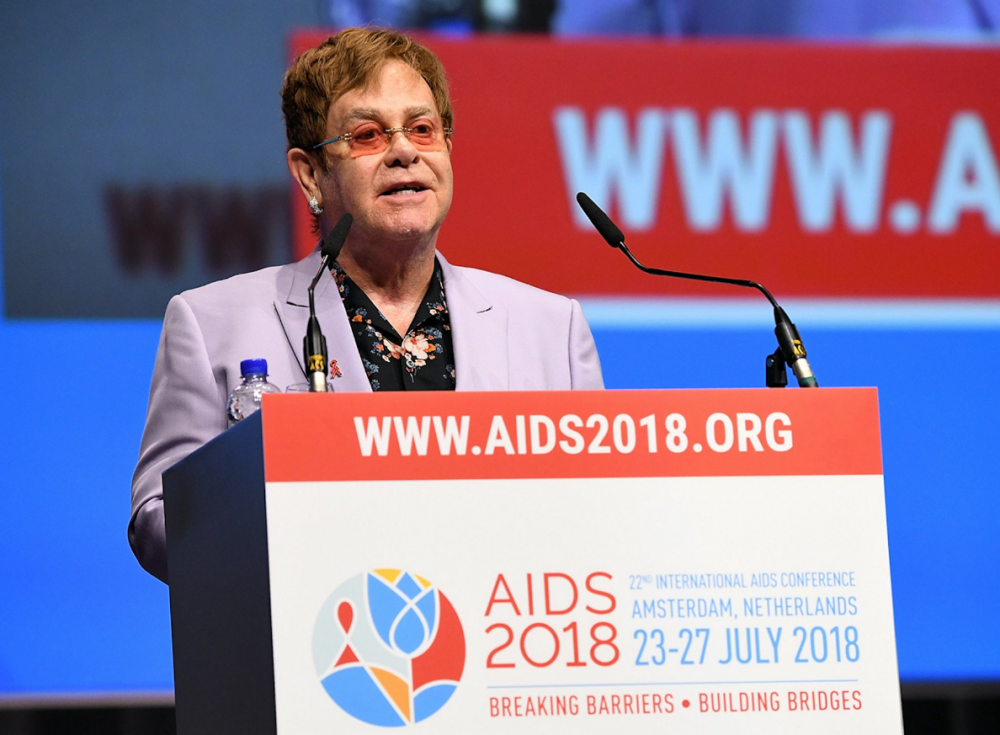A new $1.2 billion coalition has been launched to increase male HIV treatment

A new $1.2 billion coalition between HIV/AIDS donors, NGOs and pharmaceutical companies has been created to expand the diagnosis and treatment of HIV infections in men, who are less likely to access the services.
The coalition, called the MenStar coalition unites the Elton John AIDS Foundation; the United States President’s Emergency Plan for AIDS Relief; Unitaid; the Global Fund to Fight AIDS, Tuberculosis and Malaria; the Children’s Investment Fund Foundation; Johnson & Johnson; and Gilead Sciences to improve the accessibility of HIV treatment for men. The coalition has a particular focus on men aged between 24 and 35.
The announcement was made earlier this week at the 22nd International AIDS conference.
Elton John helped launch the event, commenting:
“If we want … to end AIDS once and for all, we must make men part of the solution”
“It is time there was a global coalition to teach men to protect themselves, and in doing so, it will teach them to better protect not only their wives and girlfriends … [but] also critically their brothers and their sons.”
The United Sates President’s Emergency Plan for AIDS Relief (PEPFAR) will provide the most funding, offering $800 million for strategies that hope to reach 1 million men with HIV treatment and supress the virus in 90% of young men.
A MenStar press release noted the interconnectivity of the member’s efforts and stressed the importance of collaboration in enhancing each other’s work. MenStar was formed from the growing awareness that men need to be reached in new ways to break the cycle of transmission.
The collaboration will reach men through innovative methods such as services informed by data analytics and human-centred design, targeted marketing and HIV self testing.
UNAIDS reports that men and boys are more likely to die from AIDS than women, with 58% of AIDS related deaths being men. The gap between male and female AIDS mortality is greatest in sub-Saharan Africa where only 41% of people living with HIV are male, but they account for 53% of deaths.
This is largely because men are less likely to receive treatment for HIV than women. In sub-Saharan Africa men and boys are 20% less likely to know they have HIV and are 27% less likely to access treatment, according to UNAIDS.
UNAIDS have found two key reasons for this gender gap. Firstly, services are not considered male-friendly and gender norms often force them away from health clinics. Although women and girls also face many barriers to treatment, they tend to spend more time in healthcare centres, on account of being mothers, and are therefore more likely to access treatment.
Experts have emphasised the importance of reaching men in ending the AIDS epidemic and increasing protection.
One of MenStar’s first projects will involve partnering with agencies in Kenya on a HIV self-testing campaign aimed at young men. Unitaid suggests that men are more likely to test for HIV if they can administer the test themselves.
Join us for the 10th Anniversary AIDF Global Summit in Washington D.C, USA on 5-6 September 2018 to discuss communicable diseases.
If you’d like to stay informed on the latest updates in aid and development, please sign up for the AIDF newsletter.
Image credit: Michael Kovac / GettyImages















